- bats going home
- sunset on the Ord
Kununurra History (Wikipedia) Kununurra is a town in far northern Western Australia located at the eastern extremity of the Kimberley Region approximately 37 kilometres (23 mi) from the border with the Northern Territory. Kununurra was initiated to service the Ord River Irrigation scheme. Kununurra is the largest town in Western Australia north of Broome, with the closest town being Wyndham, 100 kilometres (62 mi) away. Kununurra is 3,040 kilometres (1,889 mi) from Perth via the Great Northern Highway. The town is situated in among the scenic hills and ranges of the far north-east Kimberley Region, having an abundance of fresh water, conserved by the Ord River Diversion dam and the main Ord River Dam. The tropical agriculture crops grown in the Ord River Irrigation Area (ORIA) have changed over the years. Tourism and mining have also become important to the local economy. Indian Sandalwood plantations at Kununurra Key farm activities including the growing of melons, mangoes and until recently, sugar cane. Farmers are now turning to a more lucrative (though longer term) crop of Indian Sandalwood. Other crops that have been grown in the Ord are cotton, safflower and rice, which is being trialled once again, having been the first crop planted on the Pilot Farm in 1960. The town has a melon picking season, which attracts migratory farm workers to the area. There is also a thriving tourism industry with most tourist operators capitalising on the scenery of the Ord River, Lake Argyle, Diversion Dam and other local locations, including the relatively nearby Bungle Bungle. construction of the Ord river diversion dam The history of the idea of agriculture on the Ord River dates from the 19th Century. On the first pastoral lease map (held by WA State Records Office) for the area dated 1887, it shows the northern bank between Wyndham and Kununurra, near House Roof Hill was held as a “Concession for Sugar Cane Planting,” although it was never taken up. The idea of tropical agriculture on the Ord was discussed much from the earliest dates, but the land remained under pastoral lease until 1960. Kununurra was built on land resumed from Ivanhoe Station pastoral lease before 1961, as the town for the Ord River Irrigation Area which started as the Ord River Project or Ord Scheme, with survey work starting in 1959. Lake Kununurra, is the flooded section of the Ord River valley that was formerly known as Carlton Reach, which was at times a ten kilometre long waterhole held back by the natural rock barrier, known as Bandicoot Bar. At this site in 1959 drilling and blasting marked the start of construction of the Ord River Diversion Dam, which is anchored down onto the Bandicoot Bar. This dam with twenty radial flood gates was almost completed when visited by the Queen and Prince Phillip in March 1963, then later completed and officially opened by then Prime Minister, (Sir) Robert Menzies on 20 July 1963 when he said that Kununurra and the Ord River Irrigation Area (ORIA) is “..the most exciting place in Australia.” As well as the town site some ORIA farmers live on their farms, however the initial idea of the Ord Scheme was for “closer settlement” to allow farmers the convenience of living in the town and since the start of the first Pilot Farm in 1960 most farmers in the valley had lived in the town, however many people now live on their irrigation farms. Other agricultural and residential localites exist within a 50 km radius of the town, including various Aboriginal Communities, Crossing Falls, the Riverfarm Road and Packsaddle farm areas, and the Frank Wise Institute of Tropical Agriculture, formerly known as the Kimberley Research Station (KRS). KRS started in 1945 from the original Carlton Reach Research Station, set up by Kimberley Michael Durack with help from his brother William Aiden Durack in 1941, and support from the WA Department of Agriculture and the WA Public Works Department, being the first serious attempt at tropical agriculture on the banks of the Ord River. It was also in 1941 that (later Sir) Russell Dumas inspected the Ord gorges for dam sites on behalf of the Public Works Department. The scheme involved damming the Ord River by building the Ord River diversion dam so that the waters could be conserved and directed to irrigate about 750 square kilometres (290 sq mi) of land. By 1966, there were 31 farms on the Ord River plains. In 1968 the second stage of the scheme was started with the building of the Ord River Dam (or Ord River Main Dam), known locally as “Top Dam,” which holds back the waters of Lake Argyle. Flooding of the Ord River continued until completion of the Main Ord River Dam situated 55 km upstream from Kununurra, which was started in 1968, and officially opened on 30 June 1972, with support from WA Premier John Tonkin, by then Prime Minister William McMahon, when he said “This marks the beginning of Ord Stage II (Two).” The Ord River Dam flooded the land of the Argyle Downs station, the home station of the pioneering Durack family, to form what has become known as Lake Argyle. Stone work from the original Argyle Downs homestead, was removed before Lake Argyle filled and was re-erected near the dam site to become the Argyle Downs Homestead Museum. The Museum had been run by Tourism WA but was taken on by the Kununurra Visitor Centre during 2010. The second stage of the Ord Project still has not been fully developed but new work is underway. In May 2010, with major funding from the Federal Government, the extension of the main channel construction got underway under the Moonamang Joint Venture and images of this as well as historic archive images of the Ord Scheme can be seen on the Kununurra Historical Society website from the external link below. Kununurra comes from the English pronunciation of Gunanurang in the Miriwoong language with a general meaning of “Big Waters” having become the popular definition or “Big River”Other accounts of the name of Kununurra state that it was the Miriwoong name for this part of the Ord River, which makes sense in that the Ord River runs for hundreds of kilometres coming from the south near Hall’s Creek. It is likely that other parts of the Ord River were known by other Aboriginal language names, by the various tribal language group areas, over which the river traverses. A 1943 soil classification had named the volcanic clay known locally as “blacksoil”, being the predominant soil type of the irrigation area, as “Cununurra Clay” and “Cununurra” was put forward as a possible name, among others in 1960. The General Post Office (GPO) representative from WA on the Nomenclature Committee, objected saying that Cununurra was too close in name to the town of Cunnamulla and that could cause postal confusion. A compromise was reached and “K” was used with an argument having been put forward that this would bring it into line with other East Kimberley placenames, such as Kalumburu, and Karunjie. The name was only finally decided just days before the newest town of the Kimberley Region, being gazetted on 10 February 1961. Geography The landscape surrounding Kununurra includes features such as Valentine Spring, Black Rock Creek and Middle Springs along with many other waterfalls and swimming holes. Popular fishing spots include Ivanhoe Crossing, The Diversion Dam, Buttons Crossing, and various locations along the Dunham and Ord Rivers. The town is located close to the confluence of the Ord and the Dunham River. Lake Argyle, Australia’s largest artificial lake, over 100 square kilometres (39 sq mi) in size, is 72 km by road from the town, being held back by the main Ord River Dam. The town lies within the Ord Irrigation Area Important Bird Area (IBA), so identified by BirdLife International because of its importance for wild birds, especially estrildid finches. Climate Like other areas in the tropics of Western Australia, Kununurra paradoxically experiences a steppe climate (Köppen climate classification BSh) with distinct wet and dry seasons, The average annual rainfall for Kununurra is around 800mm. The dry season period from April to September is generally regarded as the most popular time to visit, when heat and humidity levels are lower and road & park accessibility is at its best. In the towns 53 years of weather records, rainfall of over 5mm has never been recorded in the month of August, with most Augusts being completely rainless. The build-up season from October to December is characterised by high heat and humidity levels. The oppressive conditions of the build-up often give way to spectacular electrical storms along with dramatic lightning displays which crack in to the night over the rugged Kimberley landscape. Such storms however bring little rainfall and lightning will often start bushfires in the surrounding scrub. The summer monsoon period between January and March can often cause accessibility issues and total closures with many roads and national parks due to heavy rainfall events. Days are overcast, but still hot and heavy downpours of rain are a frequent occurrence.
2nd June, Monday,
Ok! Big history lesson and the rest over. Here we are finally, in one of my most favourite places. The drive was great. Once you leave the Bungle Bungles and head North the terrain starts changing to very mountainous and it starts getting very interesting and very scenic. In fact, it’s gorgeous. A few brumbies and mangy dingos along the way but apart from that, no cattle, no goats etc. We stopped at Turkey creek, now know as Warmun but we prefer the name of Turkey Creek. We camped here before. It’s a small Aboriginal community, a service station, caravan park and not much else. We had breakfast (just a toastie) and there were hawks sitting in the trees and crows waiting for handouts. Geez, did the hawks swoop when you threw a crust out and also attack the crows. Amazing! Arrived at the caravan park and got the best spot in the whole park. Heaps of lawn and just a drive in….no reversing the van this time and no near divorce :-). We didn’t cook as they had a fund raiser dinner for the RFDS (which is a charity I support). Barramundi or Steak, 3 salads and a roll for $10 a head. Take your chair and own plate and drinks. It was awesome, lots of people to chat to and all have a tale of where they’ve been and what they’ve seen and where they are heading to (I love it). The park is right on the Ord River and there is a resident croc, just sitting there. Just a Johnson croc, a fresh water croc and not of much threat. He is a bit mangy, he’s lost some of his jaw and a foot so he lies on the bank and gets thrown a chicken leg or two. He just sits there and looks at you and the turtles and cat fish just swim around him and he doesn’t seem to mind. Quite entertaining, really. Tomorrow, we will check out the visitor centre and maybe book Ralphie in for a baramundi fishing expedition. He says that he is not going home until he has caught his Barra. We could be travelling forever in that case ;-).
3rd June, Tuesday
Another beautiful day in Kununurra (35 degrees today). We took Hugo for an early morning swim in the Ord river with the crocs. Hugo didn’t seem to mind too much, neither did the crocs J. He just got in the water and off he went, crocs and all. We had brekkie and then went off to the visitors centre so Ralphie could book a fishing charter to catch that Barra. He needs to get another person to book before he goes so it might not happen here. Darwin might be a better option as they would probably have more fishing charters operating. We checked the shops out to see where to get the groceries, lotto etc. and then we took a drive to see the farms. The sandalwood plantations have really taken off here, big time. The sandalwood is grown here and then sent to China to be processed into essential oil, shampoos, cosmetics, soaps etc. and then sent back to us. It’s very sad really that we can’t do that here but I guess our labour costs are too high and it wouldn’t be sustainable. It’s very sad really L. The Ord river irrigation system to water crops on various farms is quite amazing. There is a channel where the water is allocated onto various farms (all gravity fed), quite remarkable. There is so much water up here and that’s why it makes farming so sustainable. We then went to the Zebra rock studio where they make the most beautiful things out of the rock (all different patterns in the rock) that is found here. It’s made into all sorts of ornaments, jewellery etc. and is really quite beautiful. I bought a necklace the last time we were here so didn’t need to spend this time. Back to camp and a nice swim in the pool then another swim with the crocs for Hugo and dinner and yet another early night. We do get up early though. Tomorrow, we have hair dressing appointments (the grey matter is showing up big time and Ralpie has decided to go for a No. 4) for the 2 of us and then we will see what else we will do (We might do nothing, nice to have the option). It’s nice to have a good stop and catch our breath. Might get my paints out tomorrow and give that a go.
4th June,Wednesday
Another beautiful day in the Kimberleys (sounds boring, doesn’t it ). We had a laid back day. We got an early call from the visitor centre to say that someone else had booked in for the Barra fishing day. YAY! Ralphie can go because they needed a minimum of 2 peeps to do it, so off he goes for the whole day on Friday. They will pick him up at the park at 6.30 am. I will get my paints and stuff out and see what I can do while he is gone, because I have the whole day to myself. We went to the hairdressers. Ralphies No. 4 looks awesome, it really suits him but he is going to have to wear a hat all the time, for obvious reasons ;-)…. Don’t tell him that I told you that :-). I had a colour and while I was there she said that my eyebrows needed attending and so did my mo. Had to admit that I agreed with her, so I got that sorted all in the same appointment. Will be fine now for awhile. Came back and took Hugo to swim with the crocs again and then we jumped in the safe pool at different times to cool down. One of us has to stay with Hugo while the other has a swim. We are going to Wyndham tomorrow which is 100kms from here, just for a day trip. We want to see the prison tree as well and another spot where all the rivers come in. It’s called the Cambridge gulf. I will put all photos up tomorrow. xxx
- Ivanhoe crossing – this road was closed due to the fast flow of water. This is inhabited by the big crocs, so you don’t go too close to the edge of the water
- Ivanhoe crossing
- For those who are interested in farming, this is just one of the supply channels that is used to irrigate the farms. It’s an amazing system
- Paw-paw plantation
History of Wyndham (wikipedia) Wyndham is the oldest and northernmost town in the Kimberley region of Western Australia, located on the Great Northern Highway, 2,210 kilometres (1,373 mi) northeast of Perth. It was established in 1886 as a result of a gold rush at Halls Creek, and it is now a port and service centre for the east Kimberley with a population of 800. Wyndham is split into two areas. The original town site of Wyndham Port is situated on Cambridge Gulf, while Wyndham’s Three Mile area is the residential and shopping area of the town. The first European to visit the area was Phillip Parker King in 1819. He was instructed to find a river ‘likely to lead to an interior navigation into the great continent’. He sailed into Cambridge Gulf, which he named after the Duke of Cambridge, and then sailed up a river which was subsequently named after him. Finding no fresh water on the mudflats, he departed. The town of Wyndham was established by John Forrest in 1886 as the major port and trading station of the East Kimberley, after finds of gold in Halls Creek a year earlier. By mid-1886, the town was booming. There were six pubs, one of which was a two-storey building. Ships brought in at least five thousand miners who headed off to the Halls Creek goldfields. It is known that during this boom there were times when up to 16 vessels were moored in Cambridge Gulf. However, by 1888, the gold rush at Halls Creek had ended and the fortunes of Wyndham declined. Wyndham became a tiny settlement serving the pastoral interests in the East Kimberley. By 1912, money had virtually disappeared from the Wyndham economy, and purchases were paid for using promissory notes known as “shinplasters”. During World War II, the town was attacked several times by Japanese aircraft. Wyndham’s significance as a service centre was crucial for the construction of the Ord River Diversion Dam and the town of Kununurra in the early 1960s. With the rise of Kununurra as a larger population centre the significance of Wyndham as a service centre had diminished by the 1980s. Wyndham has regained significance as the port for the region with new mines shipping ore from the port.
Wyndham Meatworks
In 1913, the Western Australian government started to construct the Wyndham Meatworks to restart the town’s economy. The construction efforts were interrupted by the Nevanas affair and World War I, but the meatworks were completed in 1919 to a design by William Hardwick who later became the Principal Architect of Western Australia. The meatworks were the mainstay of the town’s economy until their closure in 1985; the town also supported the Air Beef Scheme which ran from 1947 to 1965. Geography and climate Wyndham is on the eastern side of Cambridge Gulf, an inlet of Joseph Bonaparte Gulf in the Timor Sea. It is surrounded by the Durack, Pentecost and King rivers to the south, Forrest River to the west and Ord River to the north. Much of the land around Wyndham is inhospitable, and includes the Bastion Range and the mudflats of the Cambridge Gulf. The Bastion Range is the site of the 28-square-kilometre (11 sq mi) Wyndham Important Bird Area, identified as such by BirdLife International because it holds the largest known population of endangered Gouldian Finches. Despite being in the tropics, Wyndham experiences a steppe climate, with the wet season from late November to March and the dry season from April to early November. The hottest month is November with an average maximum temperature of 39.5°C (103.1°F), and the coolest month is June with an average maximum of 31.0°C (87.8°F). The annual average maximum temperature is 35.6°C (96.1°F,), one of the highest in Australia. In 1946, Wyndham recorded 333 consecutive days of temperatures over 32°C (90°F). Large rain events do occur in Wyndham, such as on 4 March 1919 when 12.5 inches (318 mm) of rain were recorded over a 24-hour period, followed by another 4.6 inches (117 mm) the next day.
- We bought prawns off the boat here
- The small port
- Wyndham
- Boab
- A cute nic nac shop
- This is it – this is Wyndham
- We saw this guys grave at the old cemetry. The place is not used.
- Milk shake stop at the one and only cafe – it was really good.
- Lookout over Wyndham – there are 5 rivers that come in here. Hence the name “5 river lookout”
- These are barges used to load iron ore and take them out to the awaiting ships
- A Boab flower – it’s very rare to see them this time of the year and this is the one and only tree we have seen in flower. We were lucky.
- The metropolis of Wyndham
- Salt flats going to the prison tree
- On the way to the prison tree
- They used to imprison Aboriginal men in here. There are a few of these trees dotted along the place. Sad.
- This is the inside of the tree. It’s not very big in there and must be as hot as Hades.
- Shame that it has been grafitied.
- In the middle of nowhere, the dust and the dry, you come across little places like this
- Ancient Aboriginal rock paintings
- Another little creek along the dust and the dry
- Driving back to Kununurra
5th June, Thursday
We spent the whole day exploring Wyndham today. It’s a fascinating little place with lots of history. Not much for those who like the hustle and bustle. There are a few little cemetries that ll the tale of history here. The Afghan cemetry is one of those. The Afghans brought camels and donkeys across to provide transport. The other cemetry was for the meat workers who died in accidents, drowning etc. You can get such history from these places. The old meat works are now just a bunch of sheds but the crocs still hang around there waiting for the bits to fall in the water. We went to Pixies shed, she sells bric a brac, and there she was, feet on the desk reading a book and having a fag when we walked in. Geez, I love these people! She gave us the whole history of the place and didn’t seem to care much if we didn’t buy anything. We went for a milkshake at the only little café in the place and it was awesome. Of course! A little doggie decided that she liked us and she was huffing and puffing so much that I gave her some water. What else would you do? Well, that was it, mates for the time we were there. We then went and saw the Prison tree, (there are a few of these dotted along the Kimberleys). They used to use them to keep the Aboriginals incarcerated, small holes in the middle of the Boab and you can only wonder how hot and confined it was when you look inside. On the way back we drove along the King river (it’s very muddy with mangroves on either side and full of the big flat ones). We saw one, this one had to be at least 5m long, I kid you not. He was just swimming around and then……ploops into the muddy water and you couldn’t see him any longer. We saw some old Aboriginal paintings, a little faded but still legible. It’s amazing, this terrain. It’s hot and dry here at the mo and every now and then there is a little creek with some water and the most amazing water lillies, it’s quite unbelievable. The road, we were told was quite good, going there. 4 wheel drive only. Well! I would hate to think of what they thought by good……. Very rough in patches. We bought some prawns off the boat at the harbour in Wyndham and Ralphie did his famous peri-peri, garlic prawns for dinner.
6th June, Friday
Ralph got picked up at 6:30 to go Barra fishing. He will be gone all day. I spent the day painting and drawing and took Hugo for a walk. Ralph got back at around 4 and HALLELUJAH… he caught a barra. Actually he caught 4 but only kept 1 because that is what the fishing companies policy is and I think that it’s a good idea. He saw a few crocs, big ones. The guy doing the fishing charter thinks that he is crocodile Dundee. He was cleaning and filleting the fish on the shore close to the water and he was holding it up for the croc to come and get. The croc took it off the bank. The bloke is nuts. Ralph did a video but I can’t post it on this blog as the file is too big L. We had a lady who we along the way come for drinks and snacks. It was a nice way to end the day.
e along the way come for drinks and snacks. It was a nice way to end the day.
7th June, Saturday
We went to the markets – only opens on a Saturday morning. I got some locally grown produce and then came back to the camp site to veg for the rest of the day. We went for a walk at sunset to see if George the croc was there but he’s decided not to come in today…….not in a party mood, I guess. At sunset the bats started going home and I have never in my life seen so many. Their path would have had to be at least 5kms long. We all agreed on that, so we are not exaggerating. The sunsets are gorgeous. I will check on how the pictures of the bats checked out and post them on our next stop, if we have phone coverage.
8th June, Sunday
Veg out day. Cleaned the van and started packing as we are leaving tomorrow. I made a melktert, tomato and onion gravy and will make some pap and Ralph is going to cook some wors. J. Living the tough life. We have a guest for dinner so decided to do the South African food. She lived in SA for awhile. Nice lady and travelling on her own and 70 years old. Quite brave as I don’t know if I could do it. It’s so awesome here. We have met people from so many different places – I love it. So it will be So long Indian ocean and hello Timor sea and so long WA for awhile until we catch you on the bottom side.

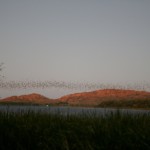
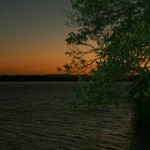

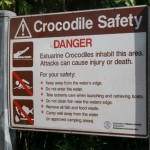


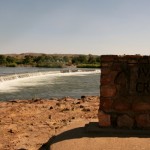
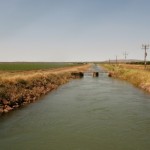
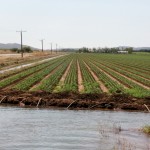

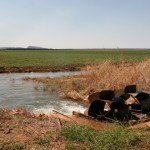

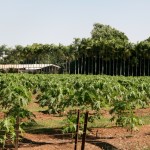
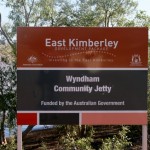
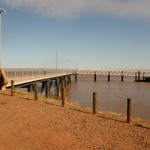

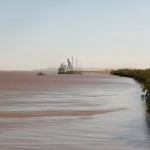
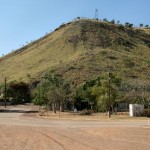


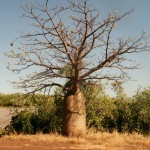
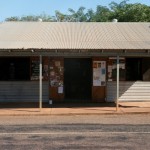

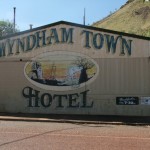
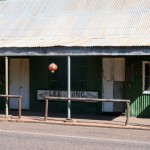
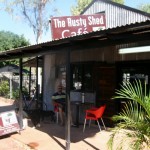
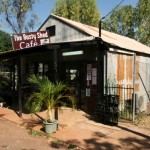
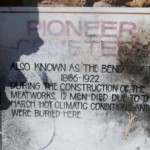


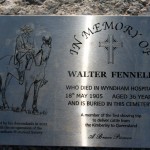


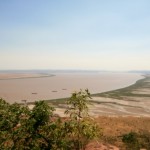
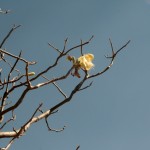
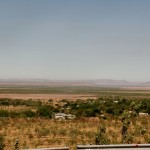


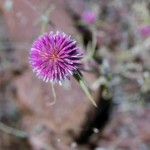
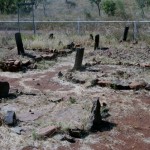
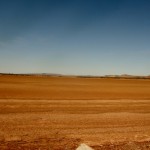
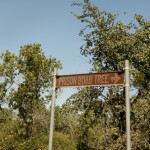
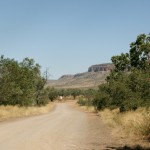
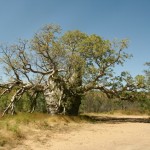
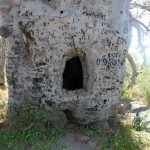


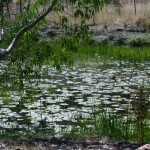
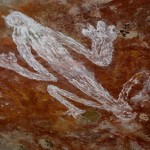
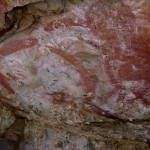
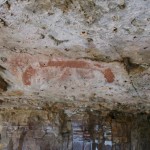
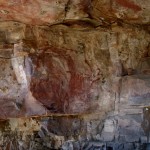
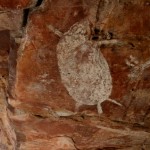



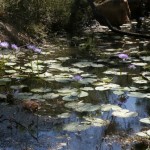
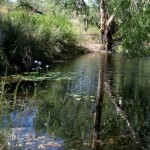

Watch out for the crocs
Hugo is swimming with the little ones :-). George is a resident where Hugo is swimming but half his jaw is missing from fighting.
Bugger – only half my comment submitted!! I also said sounds like you 2 are having an amazing time. Xx
This blog doesn’t post emojis and I’d picked you out a nice bunch!!!! – another day in paradise by the sounds of things Xx
xxx Thanks anyway xxx I’m sure they were noise 🙂
We are soooooo enjoying your blog.
Please keep going with it
Love xxxxxxxxxxxxxxxxxxxxxxxxxxxxxxxxxx
Hi Linda
You sound like you are having a great time, it brings back all the memories of our trip.Take care
The Old Bag and the Bagpipe
Love the updates,,,,,,wow, what a fantastic place,,,keep them coming
Stay safe,,XXXXXXXXXXX
xx
Hi guys at last we have found your blog ,we somehow had the wrong address got this one from Karen last night,went there for Chinese ,you must be having a great time the pictures look amazing,we have a lot of reading to do,it must be such a great trip watch out for them crocs,much love,Dennis & Rowena.